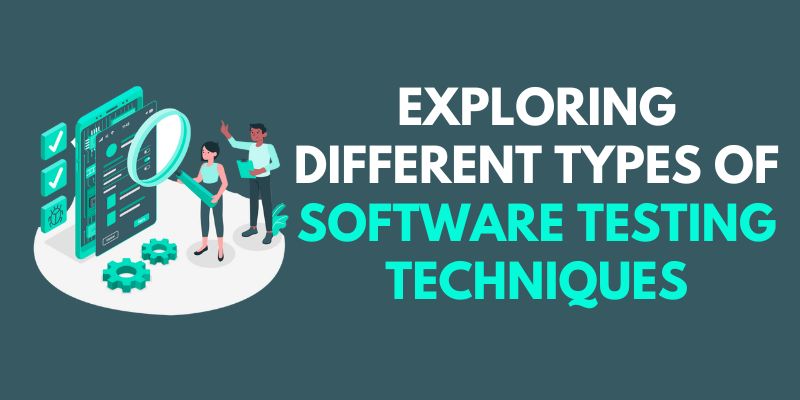Software testing is the process of monitoring an application against functional or non-functional business requirements. Each testing technique helps in the detection of a certain type of flaw. Structure-detection techniques, for example, may be unable to discover faults in the end-to-end business flow. As a result, in order to verify that a testing project is finished with acceptable quality, many testing methodologies are used. To know more about Software Testing, join FITA Academy‘s Software Testing Training in Chennai, which will provide you with a diverse skill set and the best Placement Training. This blog will explain Exploring Different Types of Software Testing Techniques.
Principles Of Testing
Below are the principles of software testing:
- All tests must meet the customer’s specifications.
- A third party should undertake software testing for us.
- It is not possible to do exhaustive testing. Because we require the least amount of testing possible depending on the application’s risk assessment.
- All tests should be designed before they are carried out.
- It adheres to the Pareto rule (the 80/20 rule), which claims that 80% of errors are caused by 20% of programme components.
- Begin with little parts and work your way up to larger ones.
Types Of Software Testing Techniques
Two main categories of software testing techniques:
Static Testing Techniques
Static testing approaches are used to detect problems in the application under test without executing the code. Static testing is performed to avoid problems at an early stage of the development cycle, hence lowering the expense of correcting them.
Dynamic Testing Techniques
Dynamic testing methods are used to test the dynamic behaviour of the application under test, which is accomplished through the execution of the code base. The primary goal of dynamic testing is to test the application with dynamic inputs, some of which are permitted by the requirements (Positive Testing) and some of which are not permitted (Negative Testing).
Enroll in the Software Testing Certification Course, Which will provide you with more Concepts about Software Testing Advantages.
Static Testing Techniques
Static testing approaches, as previously defined, are testing procedures that do not necessitate the execution of a code base. Static testing techniques are classified into two types:
Reviews
They can range from purely casual peer reviews on the artefacts (code/test cases/test data) between two developers/testers to completely formal Inspections guided by moderators who can be internal/external to the organisation.
- Peer Reviews
- Walkthroughs
- Technical review
- Inspection
Peer Reviews
Informal reviews are typically conducted without a defined framework. It is a competition amongst peers.
Walkthroughs
Walkthrough is a category in which the author of work (code, test case, or document under review) guides stakeholders through what he or she has done and the logic behind it in order to reach a common understanding or to solicit comments.
Technical review
It is a review meeting focused only on the technical features of the document being reviewed in order to reach a consensus. It places little or no emphasis on identifying faults based on reference documentation.
Inspection
The most formal type of evaluation is inspection. Prior to the inspection, the document under scrutiny is thoroughly prepared. Defects discovered during the Inspection meeting are recorded in the defect management tool and tracked until they are resolved.
Static Analysis
Static analysis is the assessment of a requirement/code or design with the goal of discovering faults that may or may not result in failures.
Data Flow
It refers to how the data trail is followed in a certain program how data is accessed and modified in accordance with the program’s instructions. Data flow analysis can reveal flaws such as a variable definition that was never used.
Control flow
Control flow is the structure that governs how programme instructions are performed, such as conditions, iterations, or loops. Control flow analysis can assist in discovering flaws such as dead code, which is code that is never used under any circumstances.
Finally, you enjoyed this blog and now understand everything about Software Testing, including Exploring Different Types of Software Testing Techniques.
You can gain more expertise and ability in designing dynamic and interactive web applications by studying at the Best Software Testing Institute In Chennai at FITA Academy.
Also, Read: Software Testing Interview Questions and Answers



